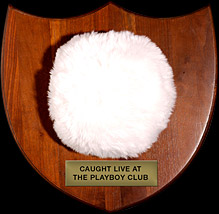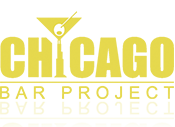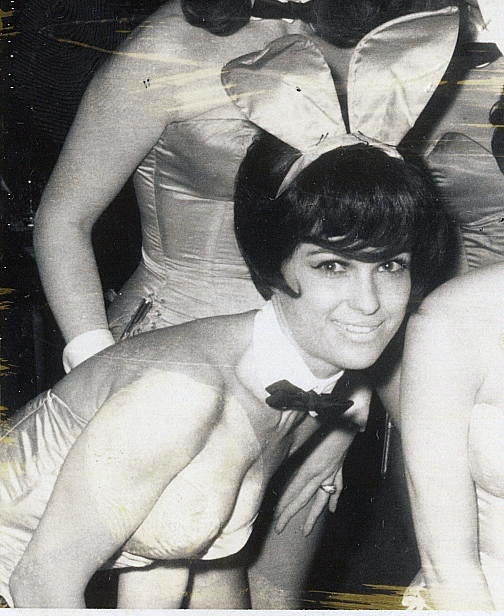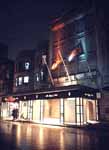 February 29, 1960 was a historic day for Chicago and the world. Playboy magazine owner Hugh Hefner decided that Leap Year would be an appropriate time for him to open up the world’s first Playboy Club on Walton Street in the Gold Coast. The club, having hired from the local talent pool, provided the first appearance of the Playboy Bunnies. These Bunnies, with their satin corsets, bunny ears and fluffy white tails served those fortunate enough to be “Keyholders” in the style of the old gaslight clubs. As VIPs of the club, Keyholders could enter the club at anytime and indulge in an atmosphere filled with music, alcohol and nubile women. The flagship Chicago location was so successful in its inaugural year that, it not only become the busiest club in the world, but it was also the first of 40 locations – each being referred to by Newsweek as a “Disneyland for adults.” The Chicago Playboy Club was a key addition to the swanky Magnificent Mile hotel bar district, and helped solidify the greater Rush and Division Street area as one of the most happening areas in the country during the 1960s. While it has long since been shuttered, as the nexus of the Playboy Empire moved out to Los Angeles, its legacy remains. It is this author’s hope that something with similar sophistication and style as the Chicago Playboy Club will one day re-emerge in Chicago as the mindless, thumping dance music filling up so many soulless meat markets of late, have outlived their usefulness and appeal.
February 29, 1960 was a historic day for Chicago and the world. Playboy magazine owner Hugh Hefner decided that Leap Year would be an appropriate time for him to open up the world’s first Playboy Club on Walton Street in the Gold Coast. The club, having hired from the local talent pool, provided the first appearance of the Playboy Bunnies. These Bunnies, with their satin corsets, bunny ears and fluffy white tails served those fortunate enough to be “Keyholders” in the style of the old gaslight clubs. As VIPs of the club, Keyholders could enter the club at anytime and indulge in an atmosphere filled with music, alcohol and nubile women. The flagship Chicago location was so successful in its inaugural year that, it not only become the busiest club in the world, but it was also the first of 40 locations – each being referred to by Newsweek as a “Disneyland for adults.” The Chicago Playboy Club was a key addition to the swanky Magnificent Mile hotel bar district, and helped solidify the greater Rush and Division Street area as one of the most happening areas in the country during the 1960s. While it has long since been shuttered, as the nexus of the Playboy Empire moved out to Los Angeles, its legacy remains. It is this author’s hope that something with similar sophistication and style as the Chicago Playboy Club will one day re-emerge in Chicago as the mindless, thumping dance music filling up so many soulless meat markets of late, have outlived their usefulness and appeal.
Genesis
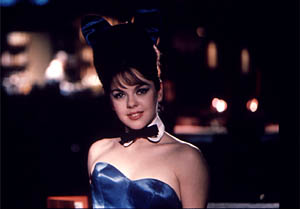 Hugh Hefner started Playboy magazine in his Hyde Park kitchen on Chicago’s South Side in 1953. In the years that followed, Playboy became the most popular men’s publication in the country. Men looked to it for insight on what to wear, where to go and what to do in order to become a sauve, stylish bachelor – in addition to leering at the pictorials. In 1959, Playboy published a story about a new nightclub chain, each branch of which was called the Gaslight Club. The first Gaslight Club opened in Chicago’s Gold Coast in 1953 and was followed by locations in New York City (1956, where Elizabeth Taylor worked while filming scenes for her Academy Award winning performance in Butterfield 8), Washington D.C. (1959), Paris (1961), and at Chicago’s O’Hare Airport (1973). Only the O’Hare Gaslight Club, located within the O’Hare Hilton is still in operation. These sophisticated watering holes only admitted members that held keys to the club, thus attracting local powerbrokers. The real story at the Gaslight Club is that a predominantly male clientele was served cocktails by the buxom “Gaslight Girls,” decked out in saucy costumes composed of tight-fitting corsets and fishnet tights. The whole scene was a recycling of a drinking establishment style that was common in “The Gay Nineties” (1890’s, that is). The Playboy article generated over 3,000 inquiries about these establishments. According to Bunny – The Real Story of Playboy Magazine by Russell Miller, this inspired Hugh Hefner and partner Victor A. Lownes III to open a gaslight key club of their own to capitalize on what seemed a huge latent demand, as well as to supplant their patronage to other Chicago haunts that included the Black Orchid, Chez Paré, and the Cloisters. To Hefner and Lownes, the real beauty was that, “The magazine could be used to promote the club and the club could be used to promote the magazine.”
Hugh Hefner started Playboy magazine in his Hyde Park kitchen on Chicago’s South Side in 1953. In the years that followed, Playboy became the most popular men’s publication in the country. Men looked to it for insight on what to wear, where to go and what to do in order to become a sauve, stylish bachelor – in addition to leering at the pictorials. In 1959, Playboy published a story about a new nightclub chain, each branch of which was called the Gaslight Club. The first Gaslight Club opened in Chicago’s Gold Coast in 1953 and was followed by locations in New York City (1956, where Elizabeth Taylor worked while filming scenes for her Academy Award winning performance in Butterfield 8), Washington D.C. (1959), Paris (1961), and at Chicago’s O’Hare Airport (1973). Only the O’Hare Gaslight Club, located within the O’Hare Hilton is still in operation. These sophisticated watering holes only admitted members that held keys to the club, thus attracting local powerbrokers. The real story at the Gaslight Club is that a predominantly male clientele was served cocktails by the buxom “Gaslight Girls,” decked out in saucy costumes composed of tight-fitting corsets and fishnet tights. The whole scene was a recycling of a drinking establishment style that was common in “The Gay Nineties” (1890’s, that is). The Playboy article generated over 3,000 inquiries about these establishments. According to Bunny – The Real Story of Playboy Magazine by Russell Miller, this inspired Hugh Hefner and partner Victor A. Lownes III to open a gaslight key club of their own to capitalize on what seemed a huge latent demand, as well as to supplant their patronage to other Chicago haunts that included the Black Orchid, Chez Paré, and the Cloisters. To Hefner and Lownes, the real beauty was that, “The magazine could be used to promote the club and the club could be used to promote the magazine.”
“For several years (late 50’s into the sixties), I was a dues-paying key holder in the Gaslight Club that was in the Near North. The Club as begun initially by the advertising executive, Burton Browne. The club’s operation was much as you described it—a mansion, multiple rooms—some decorated as faux prohibition era speakeasies, drinks served in heavy china coffee mugs. After some time a, scaled-down version was opened in/at/near O’Hare. None of the Gaslight Clubs were affiliated with the Playboy Clubs started by Hugh Hefner. The Gaslight Clubs had a slightly more upscale tone versus the more overt sexual tone in the Playboy Clubs.”
– J.R. (January 3, 2006)
The Old Colony Club
 Lownes found the building at 116 E. Walton that became the Playboy Club through Arthur Wirtz, owner of the Chicago Stadium, and grandfather of current Chicago Blackhawks ownership. The establishment had previously served as the Colony Club, the latest in a revolving door of establishments that also included the Cameo Club. Instead of taking the risk of paying $100,000 for the building, Playboy agreed to rent it for a low amount, which was supplemented by a percentage of the profits. As it turned out, this was a savvy arrangement for Wirtz who made far more in this way than the building was worth. Once the terms were settled, the old Colony Club was transformed into the Playboy Club, which was partially inspired by Humphrey Bogart’s character Rick and his bar “Cafe Americain” in Casablanca. The layout of the club is best described by Russell Miller: “Each of four floors was designed as a ‘room’ in a mythical and fabulous bachelor pad—there was Playroom, a Penthouse, a Library, and a Living Room. Teak and leather furniture, wood-paneled walls and rich, autumnal shades prevailed in the decor. Playboy magazine was in evidence everywhere—from framed original cartoons in the ‘cartoon corner’ of the Living Room, to huge, back-lit pictures of Playmates in the Playmate Bar.”
Lownes found the building at 116 E. Walton that became the Playboy Club through Arthur Wirtz, owner of the Chicago Stadium, and grandfather of current Chicago Blackhawks ownership. The establishment had previously served as the Colony Club, the latest in a revolving door of establishments that also included the Cameo Club. Instead of taking the risk of paying $100,000 for the building, Playboy agreed to rent it for a low amount, which was supplemented by a percentage of the profits. As it turned out, this was a savvy arrangement for Wirtz who made far more in this way than the building was worth. Once the terms were settled, the old Colony Club was transformed into the Playboy Club, which was partially inspired by Humphrey Bogart’s character Rick and his bar “Cafe Americain” in Casablanca. The layout of the club is best described by Russell Miller: “Each of four floors was designed as a ‘room’ in a mythical and fabulous bachelor pad—there was Playroom, a Penthouse, a Library, and a Living Room. Teak and leather furniture, wood-paneled walls and rich, autumnal shades prevailed in the decor. Playboy magazine was in evidence everywhere—from framed original cartoons in the ‘cartoon corner’ of the Living Room, to huge, back-lit pictures of Playmates in the Playmate Bar.”
Editor’s note: it has come to our attention that several people claim that the Chicago Playboy Club was somehow located on the 14th floor of the Knickerbocker Hotel building at 163 E. Walton. The photo embedded in the first paragraph of this page is a picture of the building that once housed the Playboy Club, which clearly depicts four stories. After consulting with Russell Miller’s book, Bunny, The Real Story of Playboy (1984), we have concluded that this contention has no historical accuracy and is, in other words, complete rubbish (along with claims of Al Capone’s “secret stairwell” also being located there). However, we give the originators of this fable at the Knickerbocker Hotel credit for being effective storytellers… Today, the “One Magnificent Mile Building” stands where the Chicago Playboy Club once did.
The Playboy Bunny
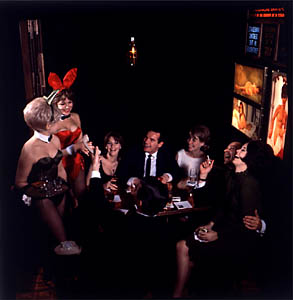 Prior to the club’s opening, one last detail needed to be worked out: what would the waitresses wear? As it turns out, Lownes’s girlfriend and Latvian refugee, Ilse Taurins, suggested that they wear something in the style of the Playboy logo that would still incorporate the titillation of the Gaslight Girls. The major problem with this, however, was that the infamous logo, designed by Art Paul was distinctively male. This did not deter Ilse and she created a costume consisting of a strapless satin bodice (designed in 10 different colors), fluffy tail and satin headband with ears. Suzy Leigh, standing 5’2″ and sporting measurements of 37-23-32, was the original model for the Bunny suit as she was felt to possess the ideal Bunny figure. It was the tail that Hefner particularly loved and thus, the Playboy Bunny concept was born. Following its initial development, the Bunny costume became the first service uniform ever granted registration by the United States Patent and Trademark Office. The costume was then modified over the years to reflect changing times. A lightweight, one-piece outfit was developed (only in 34D and 36D) in 1964, followed by psychedelic-print costumes in the late 60’s, a Bunny Cabaret costume with Espree mesh stockings, garters and dyed pumps in the 80’s, and themed outfits like the Cupid Bunny and the Carmen Miranda Bunny were developed in 1985. Out of more than four hundred hopefuls, Lownes then hired 30 of the “most beautiful girls in Chicagoland” to be waitresses at the Playboy Club These were the first Playboy Bunnies.
Prior to the club’s opening, one last detail needed to be worked out: what would the waitresses wear? As it turns out, Lownes’s girlfriend and Latvian refugee, Ilse Taurins, suggested that they wear something in the style of the Playboy logo that would still incorporate the titillation of the Gaslight Girls. The major problem with this, however, was that the infamous logo, designed by Art Paul was distinctively male. This did not deter Ilse and she created a costume consisting of a strapless satin bodice (designed in 10 different colors), fluffy tail and satin headband with ears. Suzy Leigh, standing 5’2″ and sporting measurements of 37-23-32, was the original model for the Bunny suit as she was felt to possess the ideal Bunny figure. It was the tail that Hefner particularly loved and thus, the Playboy Bunny concept was born. Following its initial development, the Bunny costume became the first service uniform ever granted registration by the United States Patent and Trademark Office. The costume was then modified over the years to reflect changing times. A lightweight, one-piece outfit was developed (only in 34D and 36D) in 1964, followed by psychedelic-print costumes in the late 60’s, a Bunny Cabaret costume with Espree mesh stockings, garters and dyed pumps in the 80’s, and themed outfits like the Cupid Bunny and the Carmen Miranda Bunny were developed in 1985. Out of more than four hundred hopefuls, Lownes then hired 30 of the “most beautiful girls in Chicagoland” to be waitresses at the Playboy Club These were the first Playboy Bunnies.
A Grand Opening
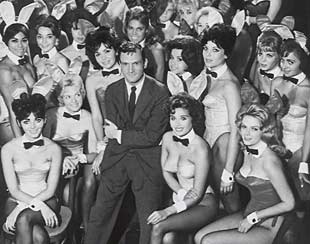 On a bitterly cold day in Chicago in 1961, lines of eager prospective members stretched around the block, warmed by ideas of what was to be found inside. Membership was available to anyone willing to purchase a key – $50 for residents and $25 for out-of-towners. The “key” itself was metal and topped off with a rabbit head, later replaced by a gold plastic credit card in typical 80’s uninspired fashion. Hefner and Lownes themselves were present on opening night until the club closed at 4am. Not only did Keyholders gawk at ladies in their colorful Playboy Bunny outfits, but steaks and salads (no fancy hors d’oeuvres or desserts), cocktails and even a pack of cigarettes with Playboy lighter were all available for the standard price of $1.50 per item (which was felt to be exorbitant at the time, at least for drinks). Entertainment was also available. Popular crooners of the day, including Mel Torme, Barbara Streisand and a 19-year-old Aretha Franklin, performed in the Library while jazz was featured in the Living Room. The Playboy Club was an instant success. In the first month, over 16,800 patrons frequented the Club. By 1961, there were 106,000 Keyholders and the place sold more food and drink than any other restaurant or club in town. During the last three months of 1961, the Club attracted more than 132,000 guests making it the busiest nightclub in the world. Clubs then opened in Miami and New Orleans and, between the first three, brought in over $4.5M in gross profits in the first year.
On a bitterly cold day in Chicago in 1961, lines of eager prospective members stretched around the block, warmed by ideas of what was to be found inside. Membership was available to anyone willing to purchase a key – $50 for residents and $25 for out-of-towners. The “key” itself was metal and topped off with a rabbit head, later replaced by a gold plastic credit card in typical 80’s uninspired fashion. Hefner and Lownes themselves were present on opening night until the club closed at 4am. Not only did Keyholders gawk at ladies in their colorful Playboy Bunny outfits, but steaks and salads (no fancy hors d’oeuvres or desserts), cocktails and even a pack of cigarettes with Playboy lighter were all available for the standard price of $1.50 per item (which was felt to be exorbitant at the time, at least for drinks). Entertainment was also available. Popular crooners of the day, including Mel Torme, Barbara Streisand and a 19-year-old Aretha Franklin, performed in the Library while jazz was featured in the Living Room. The Playboy Club was an instant success. In the first month, over 16,800 patrons frequented the Club. By 1961, there were 106,000 Keyholders and the place sold more food and drink than any other restaurant or club in town. During the last three months of 1961, the Club attracted more than 132,000 guests making it the busiest nightclub in the world. Clubs then opened in Miami and New Orleans and, between the first three, brought in over $4.5M in gross profits in the first year.
Membership Has Its Privileges
 Playboy Club Keyholders enjoyed the special benefit of being served by Playboy Bunnies in their swanky attire. While the Bunnies were the epitome of sexiness at the time, it was made very clear that she was unavailable for anything but the serving of cocktails. Keyholders could look but not touch. The Bunnies themselves were instructed, in a 44-page “Bunny Manual”, that they could not date customers, give out their phone numbers, or meet their boyfriends or husbands within two blocks of the club. If they did, they would face the tortuous penalty of being banned from the “hutch.” Also key was the mantra: “Always remember, your proudest possession is your bunny tail.” To ensure enforcement, a “Bunny Mother” was hired and served both as confidant and enforcer of the rules. The prevention of even a whiff of scandal that could have provided enough ammunition for the Playboy Club’s numerous conservative enemies for the joint to be shut down, was further ensured by Hefner and Lownes when they hired the Willmark Service System. This agency provided private detectives whose directive was to continuously test the Bunnies and bartenders by trying to entrap them in offering money for favors and thinly disguised requests for sex.
Playboy Club Keyholders enjoyed the special benefit of being served by Playboy Bunnies in their swanky attire. While the Bunnies were the epitome of sexiness at the time, it was made very clear that she was unavailable for anything but the serving of cocktails. Keyholders could look but not touch. The Bunnies themselves were instructed, in a 44-page “Bunny Manual”, that they could not date customers, give out their phone numbers, or meet their boyfriends or husbands within two blocks of the club. If they did, they would face the tortuous penalty of being banned from the “hutch.” Also key was the mantra: “Always remember, your proudest possession is your bunny tail.” To ensure enforcement, a “Bunny Mother” was hired and served both as confidant and enforcer of the rules. The prevention of even a whiff of scandal that could have provided enough ammunition for the Playboy Club’s numerous conservative enemies for the joint to be shut down, was further ensured by Hefner and Lownes when they hired the Willmark Service System. This agency provided private detectives whose directive was to continuously test the Bunnies and bartenders by trying to entrap them in offering money for favors and thinly disguised requests for sex.
“I worked for Willmark for about 13 yrs and checked the Playboy Club in Baltimore in the 1960s. I had fun doing it but felt guilty trying to tempt the girls for sex. It was a lot of fun back in those days.”
– J.F. (March 8, 2004)
While the public face of the Playboy Bunnies was strangely wholesome, there was a separate reality. In order that Hefner, Lownes and their friends could enjoy the fruits of their staff, there were “No. 1 Keyholders.” This fortunate few did not have to pay for anything and could “entertain” Bunnies. As stated in the Bunny Manual: “Employees may enter and enjoy the facilities of the Club as bona-fide guests of No. 1 Keyholders.” The dogs…
“A Bunny—like the Playboy Playmate—is the girl next door. She is the American romanticized myth… beautiful, desirable, and a nice, funloving person. A Bunny is not a broad or a ‘hippy.’ She may be sexy, but it’s a fresh healthy sex—not cheap or lewd. The Playboy Club is more like show business than the saloon business, and the Bunnies are the stars. We have managers for directors, bartenders for stage managers, and porters and busboys for stagehands. You—the stars—are what bring the people into the Club. You are what gives the Club its glamour. We stress that Bunnies should not get too familiar with customers for just that reason. Men are very excited about being in the company of Elizabeth Taylor, but they know they can’t paw or proposition her. The moment that they felt they could become familiar with her, she would not have the aura of glamour that now surrounds her. The same must be true of our Bunnies…”
– excerpt from “What is a Bunny?” written by Hugh Hefner’s brother Keith Hefner
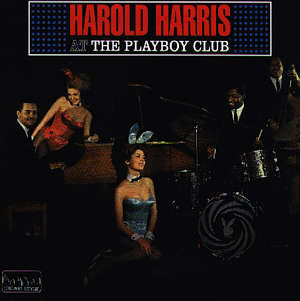
“Playboy Club Keyholders can see some of the best acts booked in anywhere – but will also be hustled out of whatever room they’re in the moment the show ends so that seating can be created for the next contingent. If you don’t have a key to Playboy you can apply for a club membership at the door ($50) and get a cash key for the evening. For whatever it’s worth, this is the original Playboy Club – the proving grounds for semi-voyeurism, bunnies, the whole bit. The club is on four levels, with the VIP dining room a formal showcase of elegant appointments, butlers in livery and a menu that rolls from French to English and back again in a funny, pretentious way. All dinners in this room are $8.50 or $12.50. Meals in other rooms are mainly steak and potatoes, masterfully portion-controlled. Actually, the best way to use the club is to stay on the main floor, have some drinks and help yourself to the $1.50 buffet table. If you don’t over-drink, you can come out with a reasonable tab. After midnight, the buffet becomes as good a breakfast buffet as any in town. Open 11:30 AM to 4 AM nightly. Closed on holidays.
“Playboy bunnies do hop to after-hour hangouts in the neighborhood, but the hutches keep changing. The last word was the Stork Lounge, directly across the street from Playboy, but don’t count on it.”
– Excerpt from Jory Graham’s Chicago, an Extraordinary Guide (1967)
Click here for an excerpt from Susan Schneider’s book Unforgettable: Vignettes of Love which relates true juicy stories of couples meeting, including one from this former Chicago Playboy Club bunny named “Patty”
The End of an Era
The Chicago Playboy Club enjoyed a long and successful run, but closed in 1986. The last club in the US closed in 1988 in Lansing, Michigan, and the last international club closed in 1991. After 31 years, the Playboy Club was no more. In addition to the entertainment of Keyholders and creation of the Playboy Bunny, one of the lesser known achievements of Hefner was that by recruiting and integrating black artists to provide entertainment at his Playboy Clubs, Hugh helped break the color barrier in the American South. Today, the “One Magnificent Mile Building” has replaced the Chicago Playboy Club, and in 2000, that stretch of Walton was given the honorary name of “Hugh Hefner Way.” The original magazine headquarters was located nearby as was the original Playboy Mansion at 1340 N. State St., both of which have also moved on. Sadly, nothing has quite replaced the Playboy Club in Chicago. Many have tried, but those that have come closest today are places like the Redhead Piano Bar and Coq d’Or.
Click here for a the story of Pete’s “First Bunny” in Baltimore
“Back in the sixties, I would visit Chicago several times a year for business purposes, or for pleasure with my wife. Our favorite spot was the original Playboy Cub. We would spend countless hours at the piano bar listening to the Harold Harris Trio. What pleasant memories.”
– B.C. (October 11, 2004)
“Today girls, tomorrow the world.”

